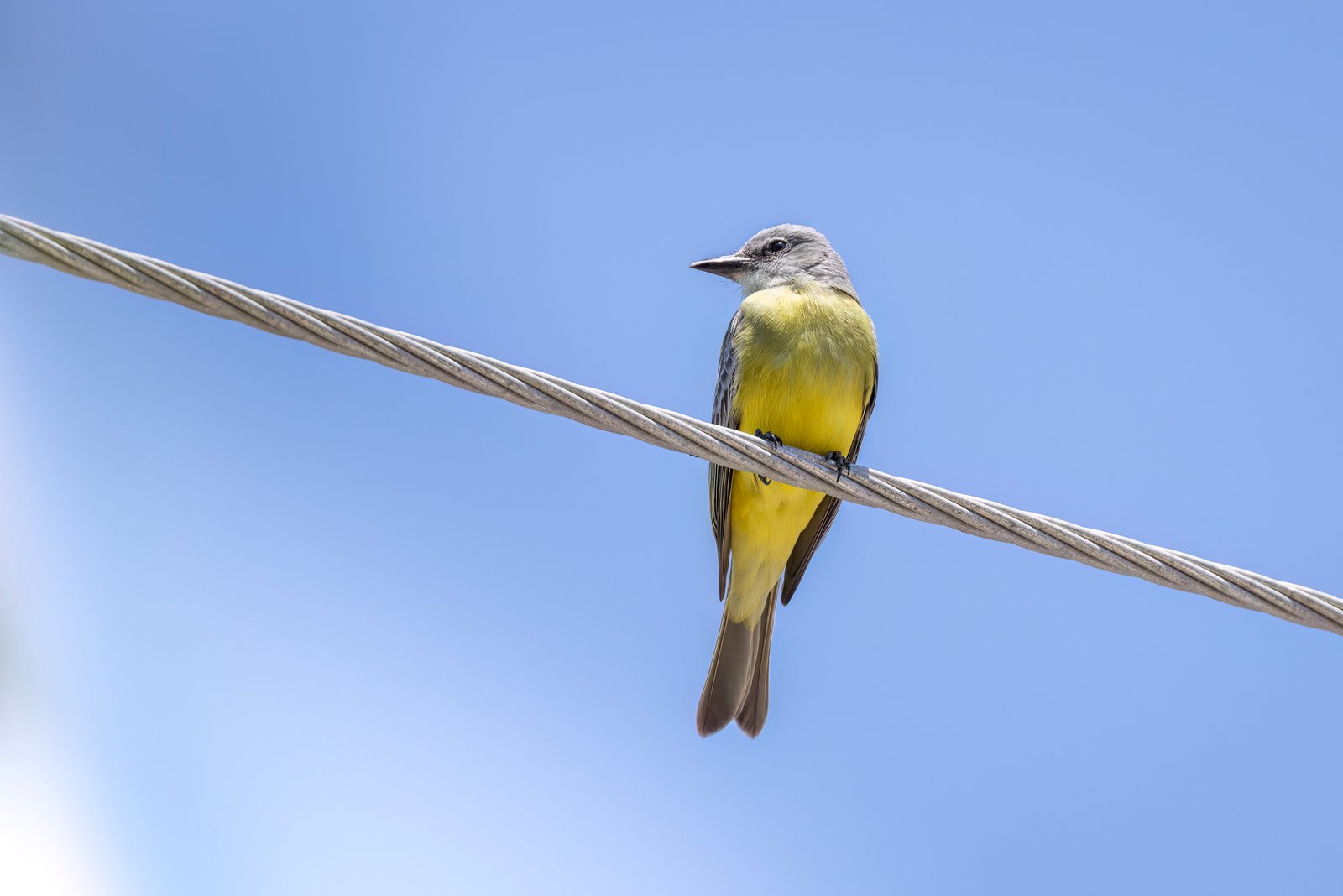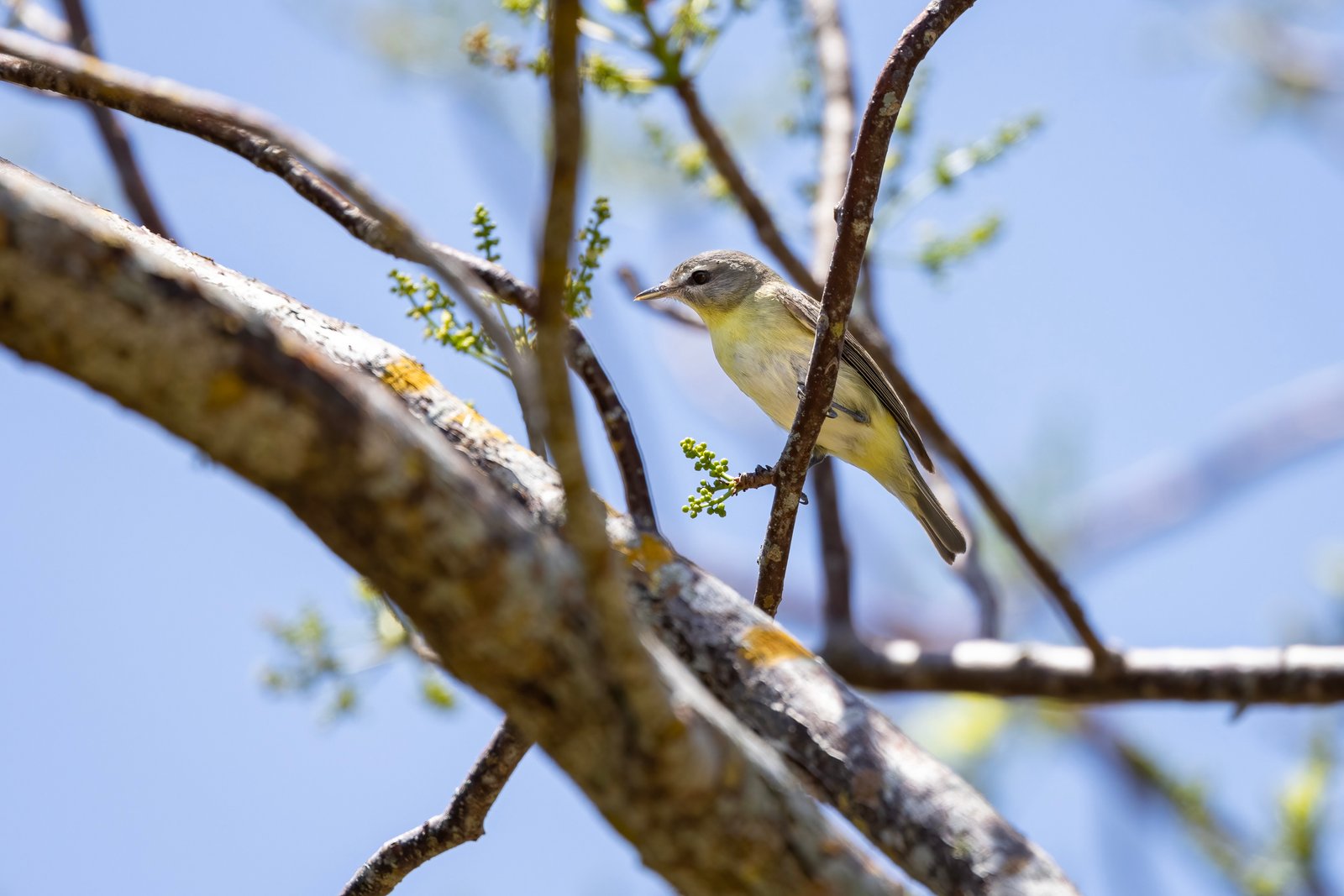The spring migration was amazing this year. Each year is different depending on the weather patterns. One of the absolute best places to be when the birds come through is Fort De Soto Park in St. Petersburg. The park is located where Tampa Bay empties into the Gulf of America and is a destination for bird photographers from around the world.
The park has several types of habitats which means a lot of different bird species. There have been well over 300 species reported. The beaches are host to many types of shore birds. Other areas of the park feature hardwood hammocks that attract warblers, songbirds, and birds of prey. In the spring, the park explodes with migrating visitors. It seems like every trail and beach offers different opportunities. There are ample food options for the travelers like mulberry and fig trees. The new buds on sea grapes are a favorite of several birds. And there are the shore birds that prefer the foods the waters provide. Since most of the birds are approaching breeding season, many of the males are in their full colors.
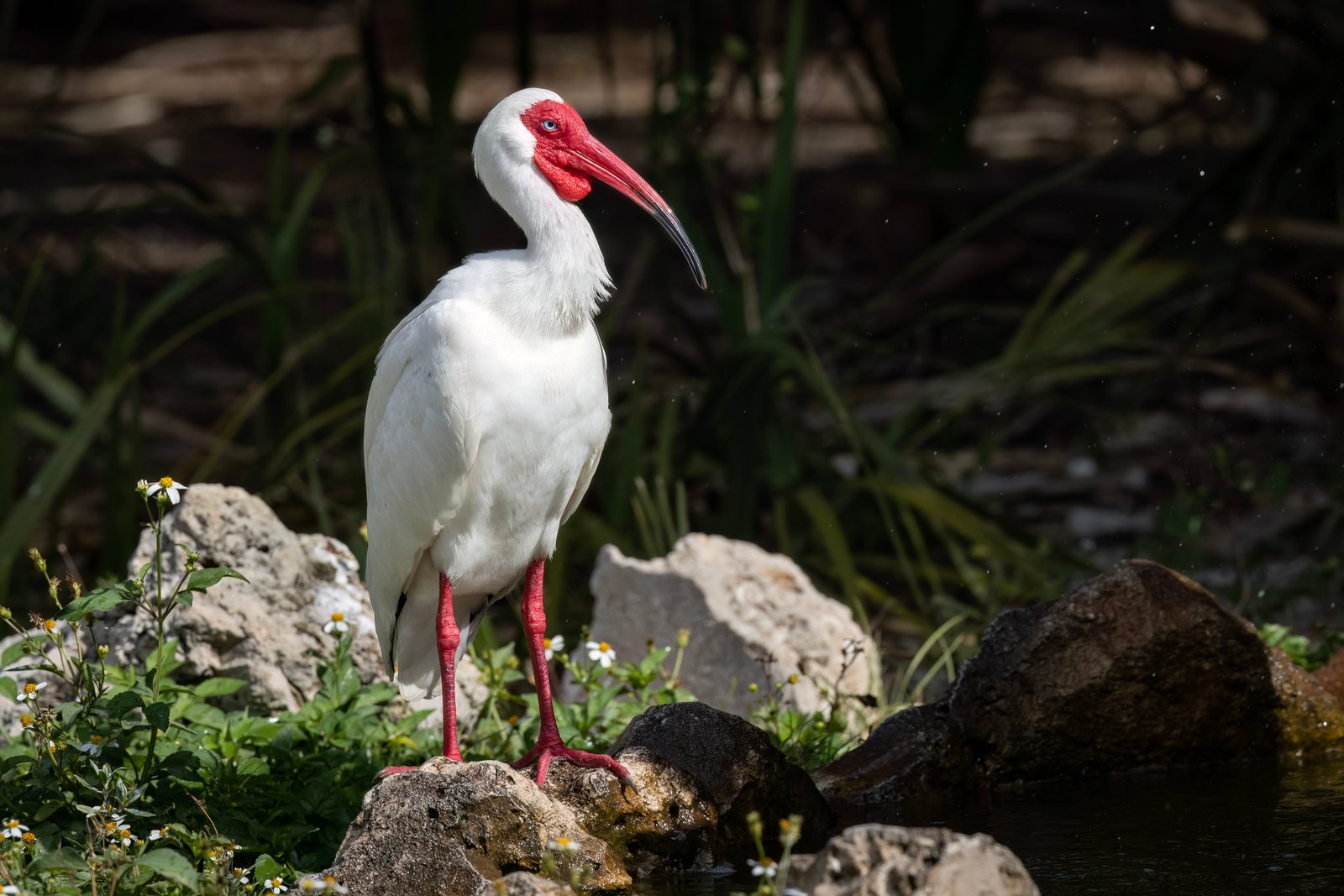
This spring the weather played a big role in some great photography successes. We had several strong cold fronts move through the area at well-timed intervals to create what birders refer to as fallouts. This occurs when the birds are pressing against the very strong frontal headwinds and eventually must find a place to rest. Fortunately, there were plenty of trees that were full of fruit, so the birds were able to eat and rebuild their energy levels.
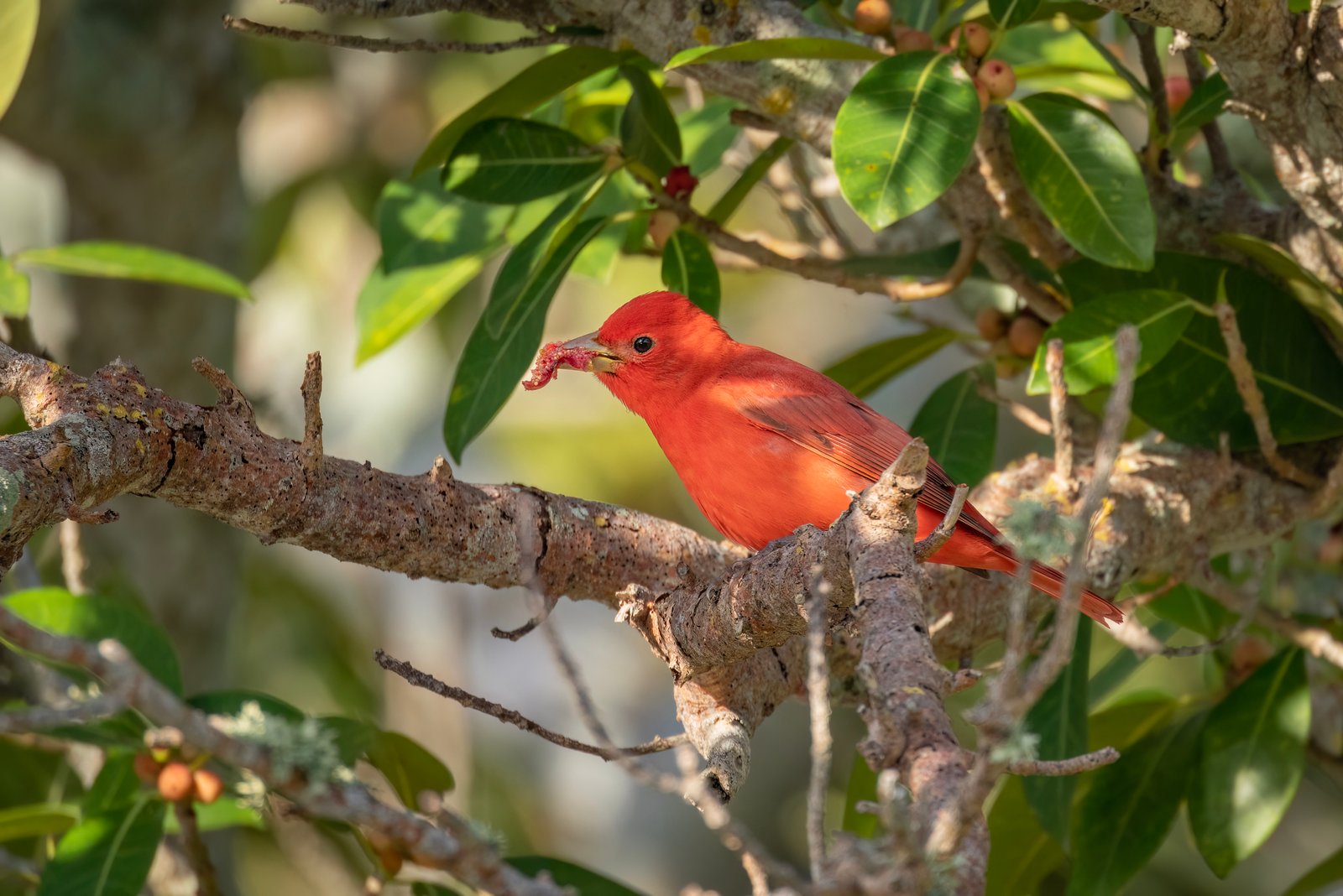
We visited the park four times over a week and each day provided different opportunities. I hadn’t seen a blue grosbeak in over 20 years. This year there was a group of 10 to 15 that stayed for several days feeding on grass seeds.
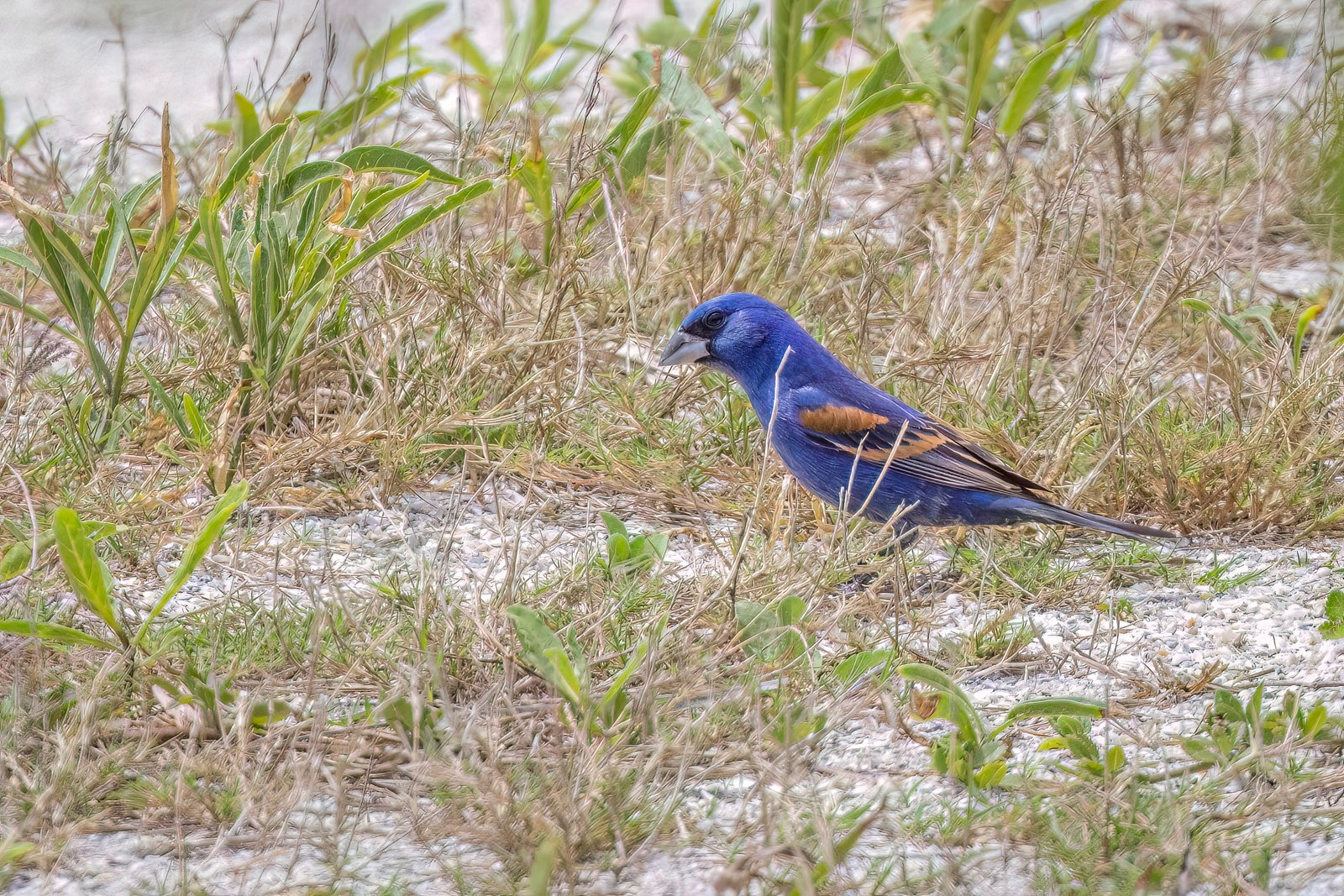
The most amazing incident occurred on a morning right after one of the strong fronts passed through. I noticed a group of photographers gathered in a small area snapping shots. When I walked over to investigate, there was a male scarlet tanager hopping around in the grass chasing bugs. He had no fear of us. He was exhausted from his travels and his only focus was refueling. I sat on the grass and at one point he hopped within 10 feet of me. It was incredible. While he was looking for bugs, a male indigo bunting joined him and began eating seeds from the ground cover. Such beautiful colors!
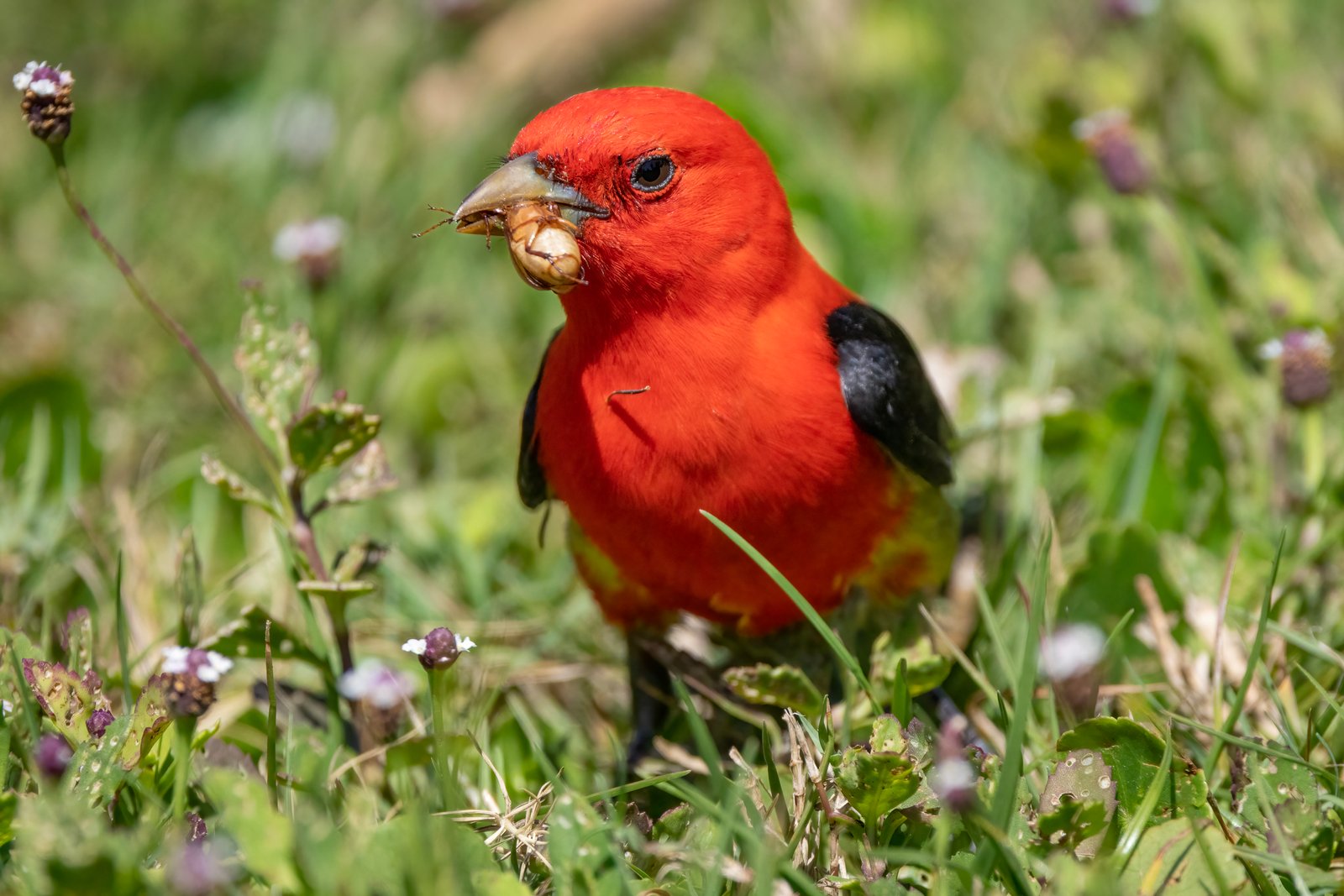
Hopefully next year will line up the same as this year and we’ll get another chance to experience an amazing migration.
The link below takes you to a nice piece about the park.
A few more pictures from this journey are featured below. For a larger selection of photos, go to the galleries listed.


